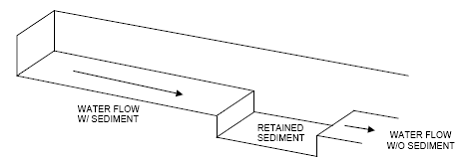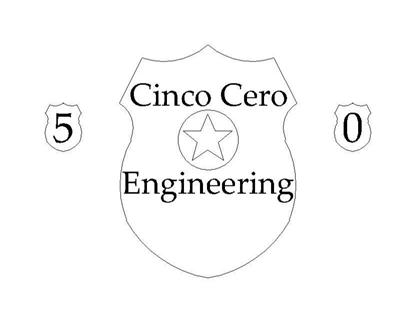2008
Projects: |
|
Fatima I Road and Canal
Cinco Cero Engineering
Dylan Gerhart ● Kari Klaboe ● Travis Velasco
Avenida Fatima I Road and Storm Drainage Design
Poster as PDF 343 kb
Presentation as PDF 6 Mb
CCE Presentation as Flash Video
Final Report
Introduction
Cinco Cero Engineering (C.C.E.) was established in April of 2008, in part of the International Senior Design (ISD) class at Michigan Technological University (MTU). ISD has been in existence since 2000 and has shaped the lives of around 136 MTU students, thus far. The team is composed of three undergraduate civil engineering students: Dylan Gerhart, Kari Klaboe, and Travis Velasco, Figure 1. In May of 2008 C.C.E. and seven other MTU students travelled to Santa Cruz, Bolivia with the goal of designing a road and storm drainage system for the community of Avenida Fatima I.
 
Figure 1 : Cinco Cero Engineering and May ISD Group
Project Location
The project is located in the country of Bolivia, which lies in central South America, Figure 2.

Figure 2 : Bolivia (Image: Google Maps)
The country of Bolivia is composed of nine departments, which are further separated into municipalities then districts. The project location, Avenida Fatima I, is located in District 12 of the Municipality of Santa Cruz de la Sierra in the Department of Santa Cruz, Figure 3.

Figure 3 : Santa Cruz, Bolivia (Image: Google Maps)
Engineering Challenge
The Avenida Fatima I project was initially petitioned for by the local community. Complaints mainly addressed concerns with flooding and poor road quality. During the rainy season, October through April, the community of Avenida Fatima I experiences intense flooding, Figure 4. Also, several portions of the road are impassible due to a rough grade and existing earthen mounds, Figure 5.
.
 
Figure 4 : Flooding Along Avenida Fatima I
 
Figure 5 : Northeast End of Avenida Fatima I Facing South
Difficulties due to floods during the rainy season are compounded further for the community with the existence of a curichi or natural stream that intersects the road. The curichi is an additional cause of flooding in both the wet and dry seasons, Figure 6. However, two canals are currently being constructed that are expected to handle around 40% of the flooding in District 12. These two canals are located to the northeast and southwest of Avenida Fatima I and can be seen in Figure 6.

Figure 6 : District 12
Field Work
During the time spent in Santa Cruz, C.C.E. completed a topographic survey, soil bore, soil laboratory tests, and watershed delineation, Figure 7. The team also met with local engineers, community members, and government officials.
  
Figure 7 : Bolivia Field Work
From this work, C.C.E. found that:
1. A majority of the Avenida Fatima I watershed lies to the northwest of the road. The watershed can be seen outlined in black in Figure 8 and is approximately 1 km2, consisting mostly of undeveloped land. However, future development plans show the whole area being residential/urban, which will be taken into consideration during the storm runoff calculations.
.

Figure 8 : Avenida Fatima I Waterhsed (Image: Google Maps)
2. The soils along Avenida Fatima I consist mainly of sands and clays, with sands composing around the top 1.0 m and clays being found from 1.0 m down. The water table was also located around 1.6 m below ground level. Although not mentioned by the community members, the sandy soils were observed to be a concern during the dry season, due to winds that produced dust clouds during that period.
3. The existing topography of Avenida Fatima I is limited and the existing roadway slopes to the northeast, towards the Antiguo Canal. If the existing road grade is to be utilized, then the drainage structure is limited to a depth of 1.3 m below the existing ground leve in order to achieve a slope of 0.1%.
4. Trash, sediment, and other debris were observed to be a concern for open drainage structures, Figure 9. With respect to sediment, downstream sedimentation of output water bodies is also a concern for the team and will be addressed in the final design.
 
Figure 9 : Environmental Concerns
5. Road quality, as seen in Figure 9, is a major issue for Avenida Fatima I. A durable pavement is expected by the Sub Alcalde and local engineers, with Portland Cement concrete being a preference.
Final Design
After returning to the United States, C.C.E. began the design of the Avenida Fatima I road and storm drainage system. Three different design options were explored, with all three utilizing a diversion canal for the curichi. Design options included underground storm sewer pipes, a covered canal, and an open rectangular channel. The diversion canal would aid the chosen design by directing the curichi away from Avenida Fatima I and towards an existing drainage canal.
In the end the open rectangular channel utilizing a Portland Cement concrete roadway was chosen as the final design, Figure 10.

Figure 10 : C.C.E.'s Final Design
Sediment traps would also be utilized in order to capture sediment at the source, Figure 11. This would reduce the amount of sedimentation that occurs in downstream bodies of water.

Figure 11 : Sediment Trap
This design was chosen because:
1. Constructability: The existing topography limits the allowable depth of the drainage structure. An open rectangular canal conforms to the depth restrictions.
2. Standard Practice: An open channel design is standard practice in District 12, with both of the newly constructed canals utilizing this design.
3. Cost: An open channel design was found to be the least costly design.
4. Environment: Sediment traps will reduce the amount of sediment that is transported to output bodies of water, reducing sedimentation.
5. Maintenance: Portland Cement concrete roadways are durable and will require little maintenance.
6. Quality of Life: Portland Cement concrete roadways will reduce the amount of exposed sandy soil, in turn reducing the discomfort of residents during the dry season.
    
Figure 12: Final Alignment for Avenida Fatima I

|
|
|
|
Last Modified on : November 1, 2013
Michigan
Technological University
1400 Townsend Drive
Houghton, Michigan, 49931 - 1295, USA
Department Phone: 1-906-487-2520
Department Fax: 1-906-487-2943
Department E-mail
Michigan Technological University
is an equal opportunity educational institution / equal opportunity employer
|
For more info contact:
David Watkins
806 Dow Environmental Sciences and Engineering Building
(906) 487-1640
email: |
|























